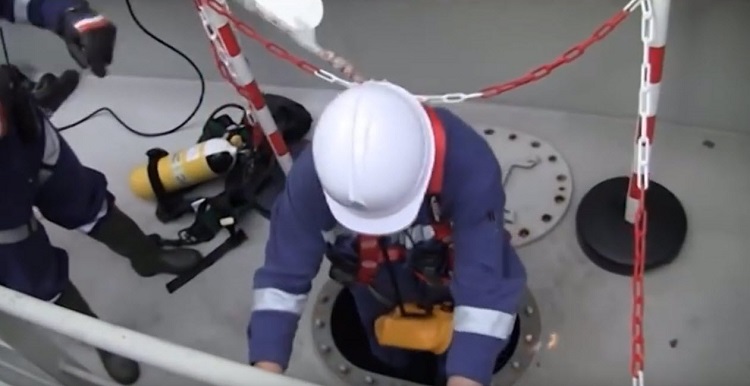Enclosed Space Entry: Breaking the Cycle
 There can be few shipboard accidents as readily avoidable as those associated with enclosed space entry. Deaths and injuries that follow such incidents are dreadful and made worse because they often stem from recurring circumstances, which are highly preventable.
There can be few shipboard accidents as readily avoidable as those associated with enclosed space entry. Deaths and injuries that follow such incidents are dreadful and made worse because they often stem from recurring circumstances, which are highly preventable.
Often seafarers know what they should do; if asked about enclosed spaces, most crew members would be able to recognise the dangers and describe correct entry procedures, but when it comes to applying that knowledge in an emergency situation, they often act differently.
When it comes to getting a job done, seafarers will often be tempted into spaces they shouldn’t go, without having first performed the necessary tests or safety checks. Alas, the problem is not that seafarers do not know what to do, but that they proceed with the action, even though it is known to be unsafe.
So why do crews fail to deal with enclosed spaces properly? Why do so many get lulled into a false sense of safety by spaces which can be toxic or contain too little oxygen, such as paint stores, chain lockers or cargo holds? Why, would someone be allowed into a space without proper rescue equipment on hand? Why do crew mates rush in when crew mates collapse, even when it means likely death for them too?
As human beings, we may all be primarily driven by primal instinct and emotion in dangerous situations, so the industry needs to work together to promote a stop-and-think response as part of a broader safety culture. We need to review case studies to unravel the decision-making processes behind incidents, we need to conduct proper and effective safety briefings, maintain adequate supervision and share lessons learned not only within the company but beyond it too. This is part and parcel of unlearning bad practice and instilling in seafarers only good practice.

As a training company, we, at KVH Videotel, appreciate the importance of changing mindset. We accept it is one thing for seafarers to know what to do, but another to make them apply that knowledge in a rapidly evolving situation. We have several methods of approach around enclosed space training, ranging from the comprehensive seven-part series, which encompasses all aspects of the circumstances and issues that may arise across preparation, entry, working in and rescue from enclosed spaces, as well as examination of case studies, with crew viewing specific incidents and working through what went wrong and how things could be done differently.
Additionally, we also offer an important training package, Enclosed, which uses gamified learning techniques to put the user in control of the action; asking them to make decisions to bridge the gap between knowledge and practical application of the procedures, creating a pressured situation where a learner’s previous training and knowledge can really be put to the test.
We also have a distance learning course that can lead to a formal certificate for more advanced learning and assessment. When we first produced the course five years ago, we were certain such training would be made mandatory. It seems incredible that although we have seen advancement in terms of drills, levels of training remain at the discretion of the individual company.
Accidents in enclosed spaces are far too common, and that means the industry may not be addressing the real root causes. There are certainly life-ending decisions being made on board ships too regularly, and we all need to help break that cycle with effective training and assessment.
Raal Harris is KVH Videotel’s Managing Director.
The opinions expressed herein are the author's and not necessarily those of The Maritime Executive.
